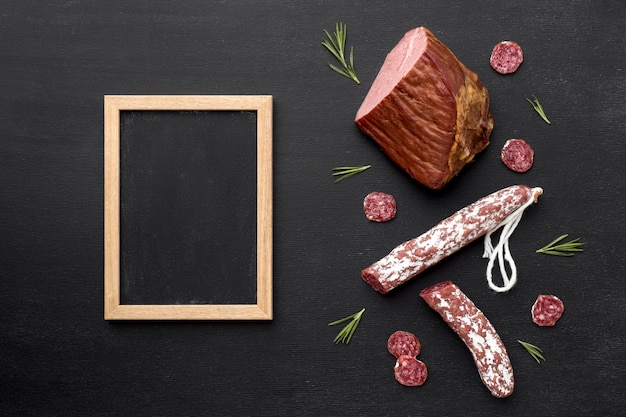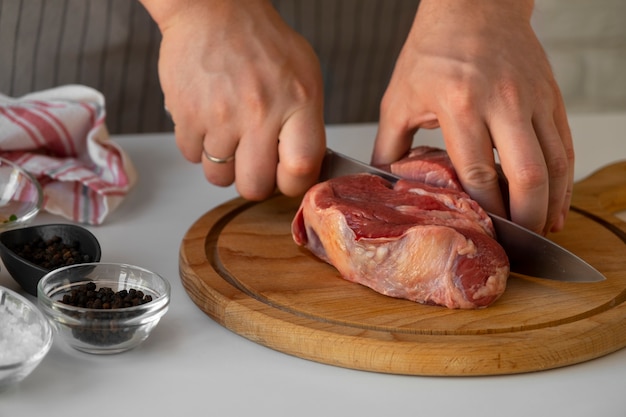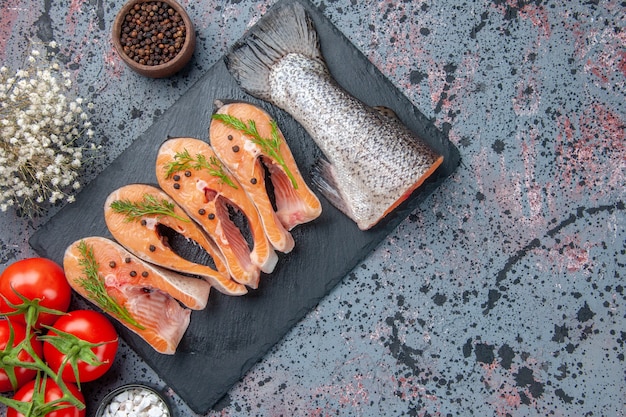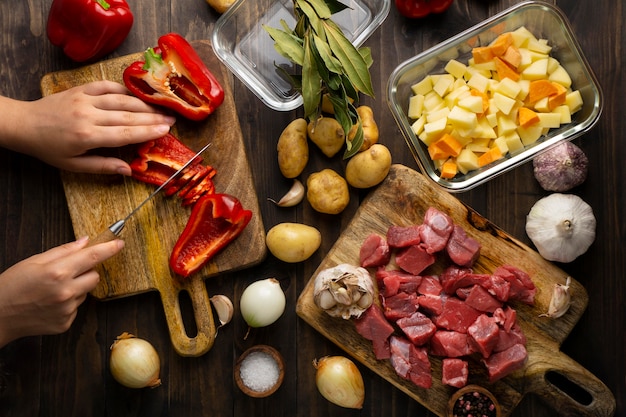Let's be honest, ham hocks aren't the most glamorous ingredient in the supermarket. They look a bit… bony. But trust me, once you discover the magic of ham hock cooking, you'll be singing their praises! They're a culinary treasure chest, brimming with flavour and capable of transforming a simple dish into something truly spectacular. From hearty stews and rich soups to inventive flavour combinations, ham hocks are incredibly versatile and, let's be real, a lot more affordable than you might think! So, grab a cuppa, settle in, and let's dive into the wonderful world of ham hock cooking together.
Part 1: Unveiling the Mystery of the Ham Hock

First things first, let's clear up any lingering confusion about what exactly a ham hock is. It's the lower leg portion of a pig, including the joint, a generous chunk of meat, and a fair bit of bone. Now, you might be thinking, "Bone? That sounds a bit off-putting." But that's where the magic happens! Those bones are the key to unlocking the most flavourful, melt-in-your-mouth broth you can imagine. They're also a treasure trove of collagen, a protein that breaks down during cooking, creating that luscious, silky texture you crave in a good stew or soup.
Don't shy away from the bone; embrace it! It's the secret ingredient that elevates ham hock cooking from ordinary to extraordinary.
Part 2: Choosing the Right Ham Hock: A Guide to Selecting the Best

Not all ham hocks are created equal, and choosing the right one can make a big difference in the final flavour and texture of your dish. You want to look for a plump, well-shaped ham hock with a generous amount of meat and a healthy layer of fat. Don't be afraid of the fat! It's the key to rich flavour and keeping the meat juicy during cooking. Here's a handy checklist to help you pick the perfect ham hock:
- Size matters: Choose a ham hock that's the right size for your recipe. A smaller one for a simple soup or a larger one for a hearty stew or braise.
- Colour check: Look for a nice, pale pink colour. Avoid any ham hocks that look discoloured or have a strong, unpleasant smell. This is a sure sign that the ham hock might not be fresh.
- The fat factor: A good layer of fat is a sign of a delicious ham hock. Look for a marbled appearance, with streaks of fat running throughout the meat.
And remember, fresh is always best! If you can, opt for a ham hock from a reputable butcher or a well-stocked supermarket where you can ask any questions you might have. They'll be happy to help you choose the perfect ham hock for your culinary adventure.
Part 3: Preparing the Ham Hock: Getting Ready for the culinary journey

You've got your perfect ham hock, and now it's time to get ready to cook! But before you toss it into the pot, there are a few simple steps to ensure a smooth and delicious cooking experience. Think of it as getting your ham hock ready for its starring role.
3.1: A Refreshing Scrub
First things first, give the ham hock a thorough rinse under cold water. You want to wash away any lingering dirt or debris that might be clinging to it. Now, don't be shy! Use a vegetable brush or even a clean kitchen cloth to get into all those nooks and crannies. A good scrub will ensure a clean and flavourful starting point for your dish.
3.2: The Great Fat Debate: To Trim or Not to Trim?
Now, here's where things get a little personal. Some people prefer to trim off the excess fat before cooking. Others, like myself, believe it's best to leave it on. The fat adds so much flavour and keeps the meat juicy. But if you're watching your fat intake, feel free to trim some of the excess. Just make sure to leave a good layer to ensure that delicious, melt-in-your-mouth texture.
3.3: The Blanching Trick: A Secret Weapon for Tenderness
This is a step that many people skip, but I swear by it! Blanching the ham hock before cooking involves giving it a quick boil in water. It helps remove any impurities and makes the meat even more tender. It's a simple trick that can elevate your ham hock dishes to a whole new level of flavour and tenderness.
Here's how to blanch your ham hock:
- Bring a large pot of water to a rolling boil.
- Carefully add the ham hock to the boiling water.
- Let it simmer for about 10 minutes.
- Drain the water, and your ham hock is ready for the next stage!
Part 4: Unveiling the Culinary Secrets: Cooking Methods and Recipes
You've prepped your ham hock, and now it's time to get cooking! There are several methods you can use, each resulting in slightly different textures and flavours. Let's explore some of the most popular options:
4.1: The Classic Simmer: Simple and Flavorful
This is the most straightforward and easiest method, perfect for crafting a rich and flavourful broth. It's a classic for a reason! Simply add your ham hock to a large pot of water, bring it to a gentle simmer, and let it cook for at least 3-4 hours, or until the meat is so tender it practically falls off the bone. You can add any other ingredients you fancy, like vegetables, herbs, or spices, to create a personalized and delicious broth.
4.2: The Braising Method: For Rich, Tender, and Flavorful Results
Braising is a wonderful way to achieve tender, succulent meat. It involves searing the ham hock in a pan until it's beautifully golden brown, then transferring it to a pot with liquids and other ingredients. You'll then simmer everything together until the meat is incredibly tender and bursting with flavour. Braising is perfect for making hearty stews, soups, and casseroles that will warm you from the inside out.
4.3: The oven-baked ham Hock: For a Deliciously Caramelized Treat
This method is less common but well worth trying! Roast the ham hock in the oven with some vegetables and herbs for a beautifully caramelized and intensely flavourful result. It's a fantastic option for serving the ham hock on its own or adding it to a dish for a touch of smoky, caramelized goodness.
Now, let's talk recipes. The world of ham hock cooking is full of delicious possibilities, from classic soups and comforting stews to more adventurous culinary creations. Here are a few of my personal favourites to get your creative juices flowing.
4.4: Ham Hock and bean soup: A Timeless Classic
This is a timeless classic, perfect for a chilly day. The comforting combination of ham hock, beans, vegetables, and your favourite herbs and spices simmered to perfection creates a soul-warming meal that's sure to please everyone. It's a real hug in a bowl.
4.5: Ham Hock and Cabbage Stew: A Hearty and Healthy Delight
This hearty stew is packed with flavour and nutrients. The ham hock adds a rich depth of flavour to the cabbage and other vegetables, and the broth is a real treat. It's perfect for a cold evening, and it's incredibly budget-friendly. You'll love the satisfying combination of textures and flavours.
4.6: Ham Hock and Potato Mash: A Simple, Comforting Dish
This is a quick and easy meal, perfect for a busy weeknight. Simply boil the ham hock until tender, shred the meat, and add it to a creamy potato mash. It's incredibly satisfying and comforting, a perfect way to use up leftover ham hock.
Part 5: Master the Art of Ham Hock Cooking: Tips for Perfection
You've chosen your ham hock, prepped it, and picked a recipe. Now it's time for some insider tips to ensure you cook it to perfection every time. These tips will help you unlock the full potential of this versatile ingredient.
5.1: Embrace the Fat
As I mentioned before, fat is your friend! It's what gives the ham hock its rich flavour and keeps the meat moist. Don't be tempted to trim off all the fat; leave a decent layer for the best results. If you're concerned about fat content, you can always skim off some of it from the broth once the ham hock is cooked.
5.2: Low and Slow is the Key
The secret to tender, flavourful ham hock is slow cooking over low heat. This allows the collagen in the meat to break down, resulting in that irresistible melt-in-your-mouth texture. Avoid high heat, as it will toughen the meat and dry it out. Patience is key!
5.3: Don't Overcook It
Overcooking is a common mistake. Ham hock will become dry and stringy if you cook it for too long. Keep a watchful eye on it, and test for tenderness before you assume it's done. Use a fork or knife to pierce the meat. It should slide through easily without resistance.
5.4: Treasure the Broth
Once the ham hock is cooked, don't throw away the broth! It's packed with flavour and collagen and can be used in a variety of dishes. Make soups, stews, gravies, or even use it as a base for sauces. It's a culinary treasure waiting to be unleashed.
Part 6: Storing and Reheating: Keeping the Ham Hock Magic Alive
You've cooked your ham hock to perfection, and now it's time to think about storage. There are several ways to store it, depending on your plans.
6.1: Storing cooked ham Hock
If you're not using the ham hock immediately, store it in the fridge for up to 3 days. Remove the meat from the bone and store it in an airtight container. You can also freeze cooked ham hock for up to 3 months. Wrap it tightly in plastic wrap and then aluminum foil, and store it in a freezer-safe bag.
6.2: Storing Ham Hock Broth
Ham hock broth can be stored in the fridge for up to 3 days. Strain it through a fine-mesh sieve to remove any solids and then store it in an airtight container. You can also freeze the broth for up to 3 months. Use the same instructions as for storing cooked ham hock.
6.3: reheating ham Hock
To reheat cooked ham hock, simply place it in a saucepan with a little water or broth and simmer until heated through. You can also reheat it in the microwave, but it might not be as moist as if you reheat it on the stovetop.
Part 7: Beyond Broth: Creative Uses for Ham Hock
We've covered the basics of cooking ham hock, but there's so much more you can do with it! Ham hock is incredibly versatile and can be used in a wide variety of dishes. Here are a few ideas to inspire your culinary creativity.
7.1: Ham Hock and black bean burgers: A Hearty and Delicious Vegetarian Option
These burgers are packed with flavour and protein, making them a delicious vegetarian option. Combine cooked ham hock with black beans, onions, and spices, then shape them into patties. Cook them on the grill or in a pan, and you've got yourself a flavourful and satisfying burger.
7.2: Ham Hock and Potato Hash: A Hearty Breakfast or Brunch Treat
This is a hearty and flavorful breakfast or brunch dish. Combine cooked ham hock with potatoes, onions, and spices, and fry them until crispy. It's a crowd-pleaser and a fantastic way to use up leftover ham hock.
7.3: Ham Hock and Leek Risotto: A Luxurious and Flavorful Dish
This is a luxurious and flavorful risotto that's sure to impress. The ham hock adds a rich depth of flavour to the risotto, and the leeks add a sweet and savory note. It's perfect for a special occasion and relatively easy to make.
Part 8: FAQs: Your Ham Hock Questions Answered
You've got questions, and I've got answers! Let's tackle some of the most frequently asked questions about cooking ham hock.
8.1: How Can I Get Rid of the "Hammy" Smell?
Many people find that ham hock has a strong, "hammy" smell. Don't worry, it's perfectly normal! To get rid of the smell, simply blanch the ham hock before cooking. This helps remove any impurities and reduce the strong smell. You can also add some herbs and spices to the cooking broth to help mask the smell.
8.2: How Can I Make My Broth More Flavorful?
The key to a flavorful broth is to cook the ham hock slowly and add plenty of aromatics. Try adding onions, carrots, celery, garlic, bay leaves, peppercorns, and thyme to the broth. You can also experiment with different spices, such as ginger, cumin, or paprika.
8.3: What Happens If I Overcook the Ham Hock?
Overcooking the ham hock can make it dry and tough. The best way to avoid this is to cook it slowly over low heat and to check for tenderness before you assume it's done. If you do overcook it, don't worry! You can still use it in dishes where the texture isn't as important, such as soups, stews, and casseroles.
8.4: Can I Use smoked ham Hock Instead of Unsmoked?
You can certainly use smoked ham hock, but it will give your dish a more smoky flavour. If you're looking for a more traditional flavour, stick with unsmoked ham hock.
8.5: Can I Use Ham Hock in My slow cooker?
Absolutely! The slow cooker is a great way to cook ham hock. Simply add the ham hock to the slow cooker with your favourite liquids and ingredients, and cook it on low for 6-8 hours or on high for 3-4 hours.
Part 9: Final Thoughts: Ham Hocks - A Culinary Treasure
There you have it! The ultimate guide to cooking ham hock. I hope you've learned a thing or two and feel inspired to give it a try. Ham hock is a truly versatile ingredient that can be used in countless dishes. It's affordable, flavorful, and surprisingly easy to cook. So, next time you're at the supermarket, grab a ham hock and give it a go! I promise you won't be disappointed. Happy cooking!
Everyone is watching

Perfect Rice Every Time: The Ultimate Guide to Cooking Rice
Cooking TipsAs a self-proclaimed foodie, I've always been a bit obsessed with rice. It's the foundation of countless cuisi...

Ultimate Guide to Cooking the Perfect Thanksgiving Turkey
Cooking TipsThanksgiving. Just the word conjures up images of overflowing tables laden with delicious food, the scent of r...

The Ultimate Guide to Cooking Asparagus: Tips, Techniques, and Recipes
Cooking TipsAsparagus. The mere mention of this spring delicacy conjures up images of vibrant green spears, crisp and burs...

Can You Cook Spaghetti with Gasoline? (The Shocking Truth)
Cooking TipsWe've all seen those crazy internet trends. You know, the ones that make you wonder, "Did someone actually try...

Chorizo and Eggs Recipe: The Ultimate Guide
Cooking TipsRight, let’s talk about chorizo and eggs. You know, that classic Spanish dish that's always a winner. It's th...
